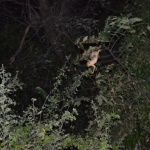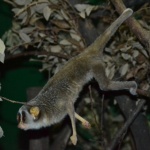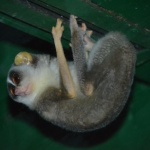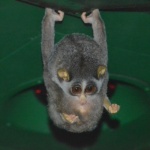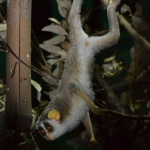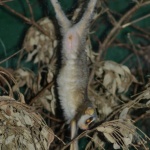By Emma Williams
I was lucky enough to go to Sri Lanka to study the Endangered Northern Ceylon grey slender loris Loris lydekkerianus nordicus. Small, elusive, nocturnal animals are difficult to survey with any accuracy; lorises are usually detected by their eye-shine using a red-filter torch and can be easily missed if they are not looking in the right direction. I carried out a trial of an occupancy survey protocol that minimised survey effort whilst maximising the likelihood of detection.
Using point-counts increases the chances of detection because you can thoroughly scan each survey site and repeat the survey on different nights to build up a ‘detection history’. Lorises have a distinctive whistle and this can also be used in detection. I found that simple occupancy surveys can provide reliable data for monitoring these elusive species and have potential application to the long-term monitoring of Asian loris populations.
I also studied the effect of naturalising the diet of captive slender lorises in captivity; in the wild they are almost exclusively insectivorous, yet they are fed a primarily frugivorous diet. Slender lorises show many morphological, physiological and behavioural adaptations to insectivory and are ill-equipped to deal with a frugivorous diet. It is vital to their health and well-being to eat foods which confer nutritional and other benefits.
I found that providing live insect prey produced significant improvements in their activity budgets; inactivity was reduced and foraging levels increased to match those of wild slender lorises.
When the lorises were fed a naturalised diet they also showed a wider behavioural repertoire; this is important because matching the foraging task to that of wild lorises helps to maintain their key survival skills and ‘behavioural competence’.
Slender lorises are amazingly acrobatic and use their strong grip and flexible bodies to perform extraordinary postures; such as monopedal, bipedal, tripedal and quadrupedal hang!
This little loris is just a few weeks old and has already perfected the bipedal hang.
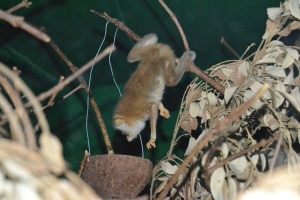
Sadly these amazing primates are threatened with extinction, mainly due to loss of their habitat; concerted conservation efforts are needed to help them to survive.

